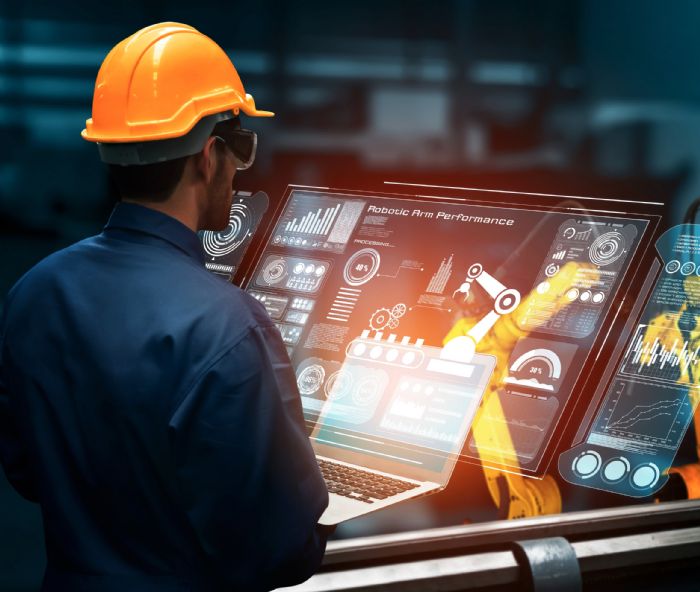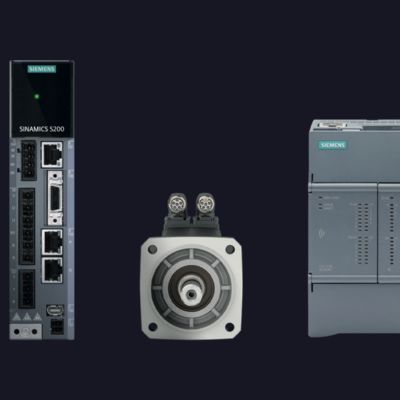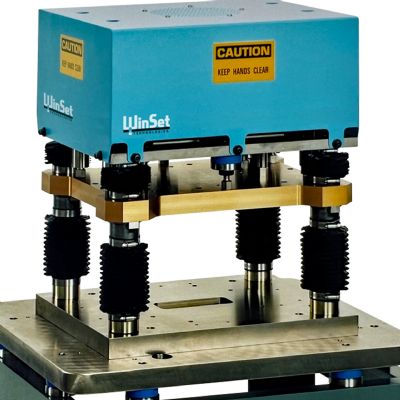And, via the evolution in controls capability, according to F. Gary Kovac, president of Pressroom Electronics, wireless and paperless information gathering has improved and aided manufacturing performance during the pandemic. This capability offers “simplicity of use and information gathering for the press operator and front-line supervisor,” Kovac says, “and eliminates the ‘touch transmission’ of paper in this COVID time.”
Remote access and robotics are a couple controls-related areas where evolution has yielded a better way to navigate pandemic conditions in metal forming operations, according to Kody Pratt, regional sales engineer for Toledo Integrated Systems.
“Companies like the use of remote access because it helps them reduce downtime in a timely fashion versus the alternative,” Pratt says.
In wholehearted agreement on the advantages offered via remote access is Jim Finnerty, product manager at Wintriss Controls Group.
“Most of our customers are operating with smaller crews, and certain subject-matter experts at these metal forming operations are not always physically available in the plant,” Finnerty says. “Remote access allows a look at machine status and the ability to correct application issues, troubleshoot and create setups for new tools—everything can be done remotely.”
Another remote-access plus: “It can be used as a training tool,” Finnerty explains. “An operator can see something on the control’s user-interface screen that the subject-matter expert, working remotely, is using to instruct that operator.”
The use of robots and automating lines, points out Pratt, is another controls-related feature that has become more sophisticated. “Within the past few years especially, robotics has become more popular. We have worked with customers to automate whole press lines by using robots to transfer parts from press to press.”
Indeed, robotic press tending offers the potential for productivity boosts in any setting, but brings a whole new level of value in the current reality of social distancing and sparsely populated shop floors.
Expect More Remote Access, Virtual Reality and Improved Delivery
How does our expert panel see controls and/or press-line operations evolving to adapt to what may be the new normal in a post-COVID-19 world?
Expect to see continued use of control solutions that promote wireless and paperless data gathering, notes Kovac of Pressroom Electronics, with features incorporating “what is needed for less contact and social distancing within manufacturing facilities, and without reducing real-time information available to the management staff and the press operator.”
The metal forming industry should continue to lean heavily on remote access and robotic applications, reasons Pratt of Toledo Integrated Systems, and newer initiatives may take root.
“Another step might be to employ vision systems, enabling users to watch the line without physically being there,” he says. “And, virtual-reality (VR) applications are becoming increasingly popular, albeit not necessarily in manufacturing. With the new challenges introduced through COVID-19, I see great potential in using VR as a method to troubleshoot and possibly even fix issues remotely.”
COVID-19 undoubtedly has created many challenges for metal formers, reasons Dawley of Helm Instrument Co., who notes that many shops have operators running presses manually for single-stroke applications, and they’ll need to be protected.
“There may be a future need,” he says, “to sanitize equipment and tools automatically using disinfectants or ultraviolet-light technology. With PLC-based controls, these functions easily can be added. Additionally, we may see more totally automated cells, incorporating many of the features mentioned above to reduce hands-on operation.”
The pandemic has forced control-solutions providers, like metal formers themselves, to look at new ways to not only optimize their products for the new normal, but also to ease the ability of metal formers to access and correctly deploy those products, according to Finnerty from Wintriss Controls Group.
“(As industry suppliers), we often can't get into plants anymore,” he says. “This creates a huge information gap where normally either a qualified sales representative or a factory-application person can visit customers and work with them.”
Finnerty points out how the industry, and his company in particular, has adapted through the rollout of virtual die-protection clinics and webinars; the inclusion of operating, maintenance and troubleshooting manuals and other print and visual documentation into the actual press-line controls for access by operators via user interfaces; new control and sensor capabilities to ease installation and operation; and online stores to help metal formers choose the correct die-protection, sensing and connection-hardware solutions for their particular needs.
“That’s been a big part of our COVID-19 approach,” Finnerty says. “We realized that this is here to stay.”
Perhaps the future metal forming plant floor will become increasingly cellular and take on a whole new look.
“Regarding controls, during the next few years we will need to think in terms of ‘cells,’” offers Phillips of Link Systems. “This encompasses not only the stamping process, but all of the ancillary details, robots, welding, tapping, etc., and the passing along of all related information through plant monitoring, and receiving back data to improve on the fly. Also, we may move toward integration with other smart-manufacturing tools such as augmented reality (AR), where operators are trained via AR glasses that display maintenance items, tooling setup and basic operation where tags are emblazoned on the machines to indicate locations and orientation. And (for metal forming in general), as additive manufacturing increases in speed and throughput, machines will employ additive and subtractive processes, combined into a single hybrid process.”
Controls Technology
Check out these articles for more from controls-technology providers, along with links to recent articles highlighting their technologies and expertise:
Controls Deliver Smooth Movement in Robotic Press Cell
Stamping Simplified via Controls
Big Press Line—A Big Investment in U.S. Manufacturing
Clutch/Brake with Built-In Automation
Simple Setup of Tonnage Monitors for Stamping Presses
New Online Source for Press-Automation, Production-Monitoring Products MF
View Glossary of Metalforming Terms
See also: Wintriss Controls Group LLC, Link Systems, Helm Instrument Co., Inc., CIECO, Inc., Toledo Integrated Systems
Technologies: Pressroom Automation, Sensing/Electronics/IOT







 So what happens when disruptive technology, such as that associated with Industry 4.0 and the Industrial Internet of Things along with all of the monitoring and managing innovations that those entail, crashes headlong into another disruptive influence, say the COVID-19 pandemic?
So what happens when disruptive technology, such as that associated with Industry 4.0 and the Industrial Internet of Things along with all of the monitoring and managing innovations that those entail, crashes headlong into another disruptive influence, say the COVID-19 pandemic?

